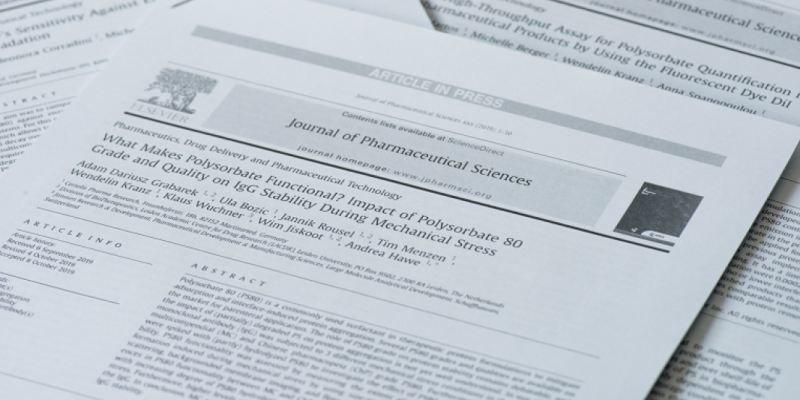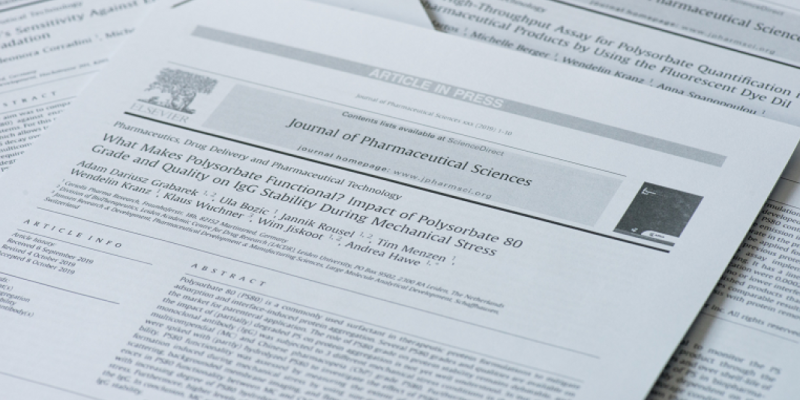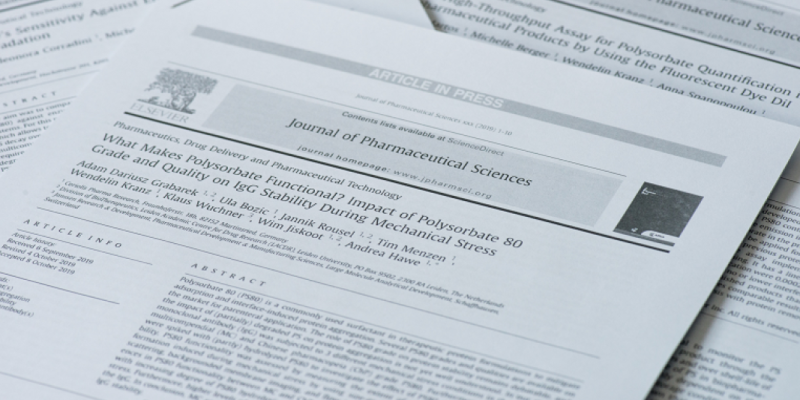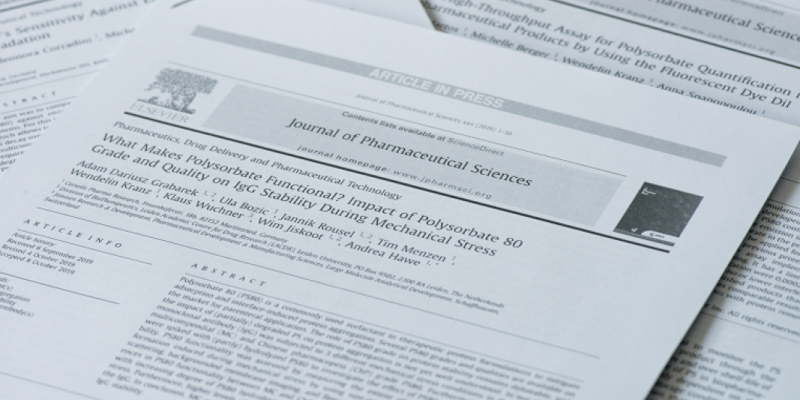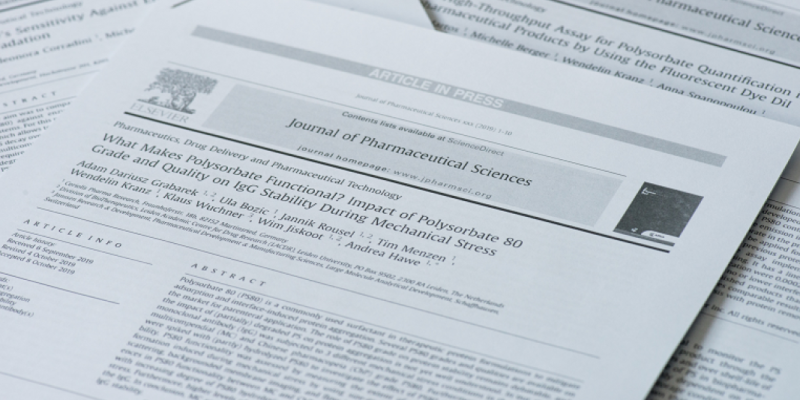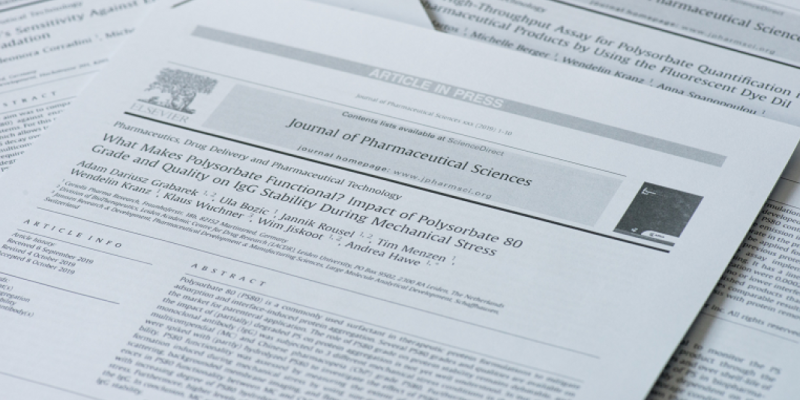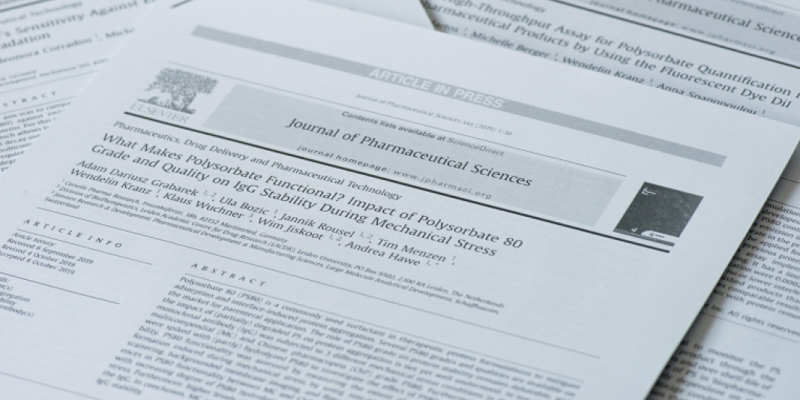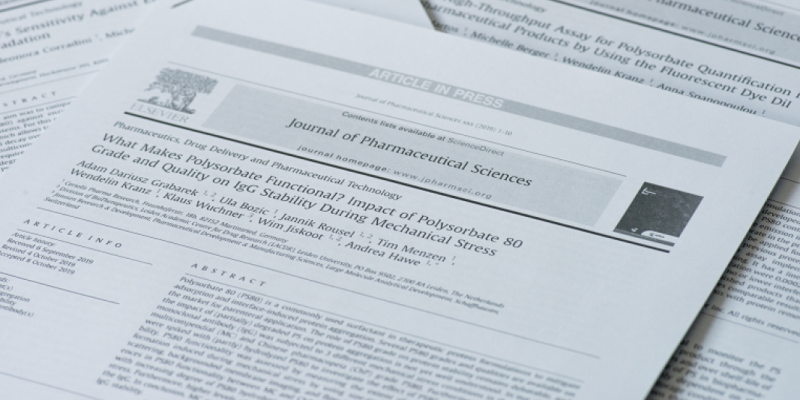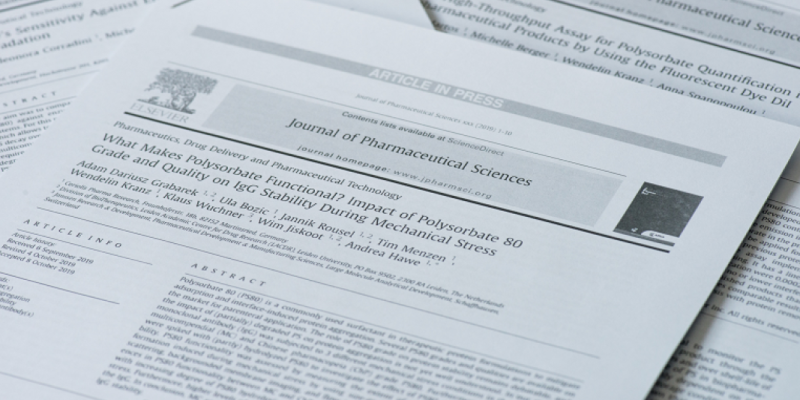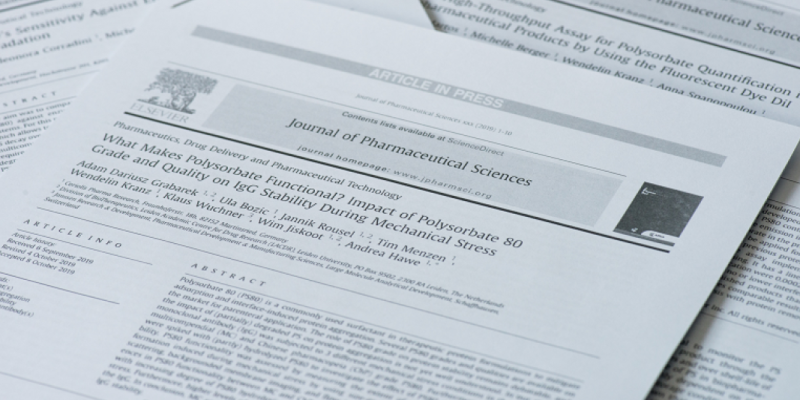Mechanistic studies on the release of lysozyme from twin-screw extruded lipid implants.
J Control Release. 2012 OCT
The influence of lipid melting on the in-vitro release of lysozyme from twin-screw extruded lipid implants was investigated. Triglyceride based implants were prepared by admixing of glycerol tristearin and various low melting lipids and subsequent twin-screw extrusion (tsc-extrusion) of these mixtures at moderate temperatures. Lysozyme was embedded as model protein and PEG 4000 or PEG 6000 was used as pore-forming excipient. By decreasing the amount of pore-forming agent from 40% to 0% lysozyme release became more sustained and the release kinetics changed from a matrix-type release profile to a linear release profile. Differential scanning calorimetry, X-ray diffraction and scanning electron microscopy measurements showed a change in implant structure upon long-term release (240 days) at 37 °C which was explained by partial matrix melting. In addition, partial melting of the implants was found to facilitate complete drug release at 37 °C whereas at 20 °C without partial melting 20% to 90% of the incorporated protein remained trapped in the implant matrix. In conclusion, partial melting of the implants during in-vitro release was found to be a major factor for the control of protein release from extruded implants and can be useful to trigger release, achieve in-vivo biodegradability and complete long-term protein release.
J Control Release. 2012 OCT
https://www.sciencedirect.com/science/article/pii/S0168365912006475?via%3Dihub=

